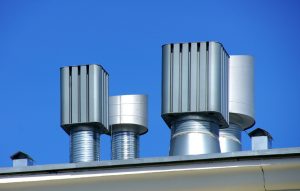Ventilation plays a vital role in ensuring a safe and productive working environment in factories. It involves the process of supplying fresh air and removing stale or contaminated air from enclosed spaces. In this blog post, we will explore the purpose of ventilation in a factory, highlighting its significance in terms of safety, efficiency, and worker well-being.
- Ensuring Air Quality:
One of the primary purposes of ventilation in a factory is to maintain good air quality. Industrial processes often generate various pollutants, such as dust, fumes, and chemicals, which can be harmful to workers' health if not properly controlled. Ventilation systems help to remove these contaminants, ensuring that the air remains clean and safe to breathe. - Temperature and Humidity Control:
Ventilation also plays a crucial role in regulating temperature and humidity levels within a factory. Excessive heat and humidity can negatively impact worker comfort and productivity. By introducing fresh air and exhausting hot or humid air, ventilation systems help maintain a comfortable working environment, preventing heat-related illnesses and improving overall efficiency. - Removal of Hazardous Substances:
Certain industries involve the use of hazardous substances, such as volatile organic compounds (VOCs) or gases. Ventilation systems are designed to effectively remove these substances from the air, minimizing the risk of exposure to workers. This not only protects their health but also prevents potential accidents or explosions caused by the accumulation of flammable or toxic substances. - Prevention of Airborne Contamination:
In addition to removing pollutants generated by industrial processes, ventilation systems also help prevent the spread of airborne contaminants, such as airborne pathogens or allergens. Properly designed ventilation systems can create a controlled airflow that reduces the concentration of these contaminants, minimizing the risk of respiratory infections or allergic reactions among workers. - Fire Safety:
Ventilation plays a critical role in fire safety within factories. By ensuring proper airflow and smoke extraction, ventilation systems help to limit the spread of smoke and toxic gases in the event of a fire. This allows for safer evacuation routes and facilitates the work of firefighters, ultimately reducing the potential for injuries and property damage.
Conclusion:
The purpose of ventilation in a factory extends far beyond simply providing fresh air. It is a crucial component of maintaining a safe, efficient, and healthy working environment. By ensuring good air quality, controlling temperature and humidity, removing hazardous substances, preventing airborne contamination, and enhancing fire safety, ventilation systems contribute significantly to the overall well-being of workers and the smooth operation of industrial processes.




+ There are no comments
Add yours